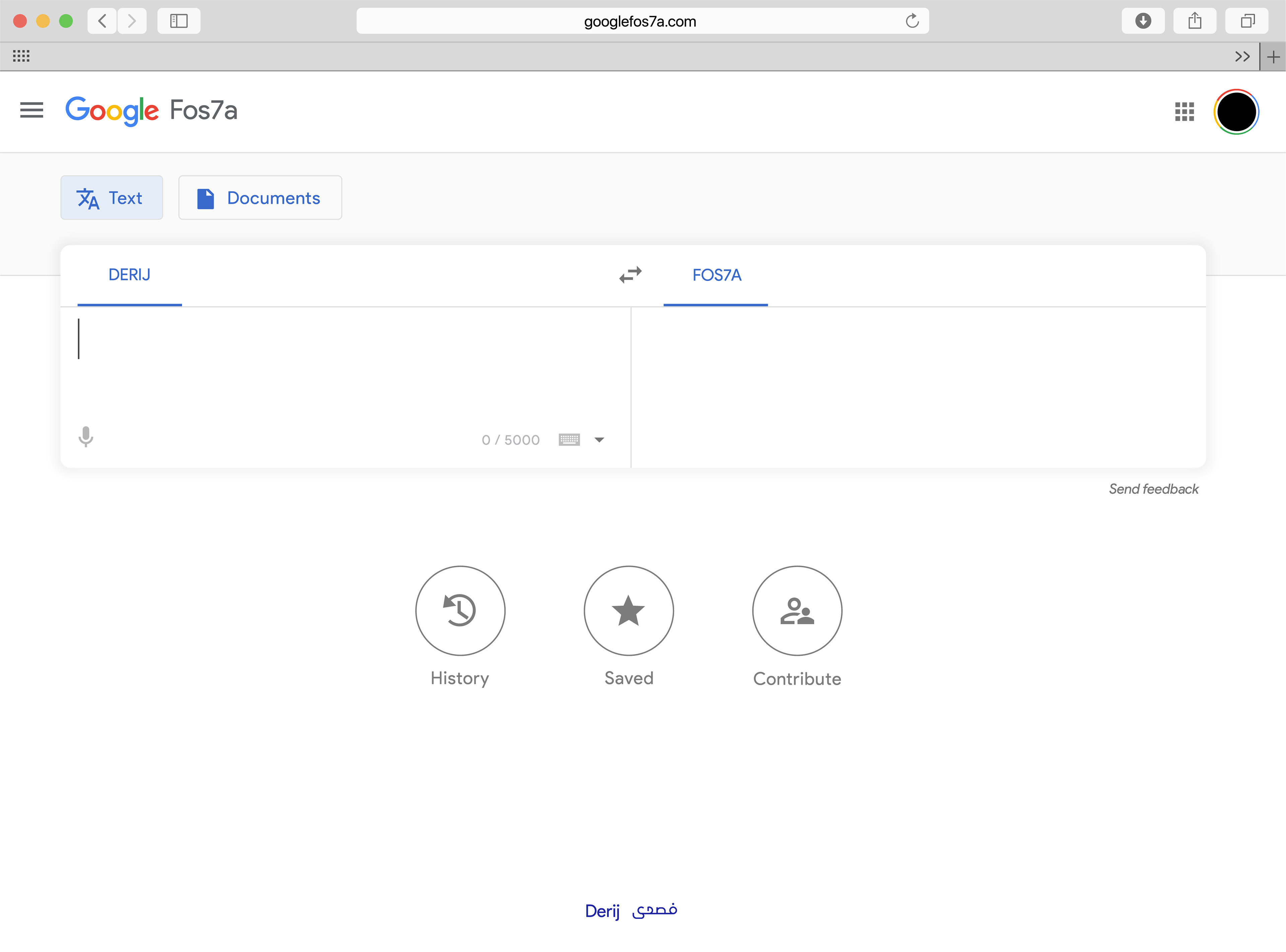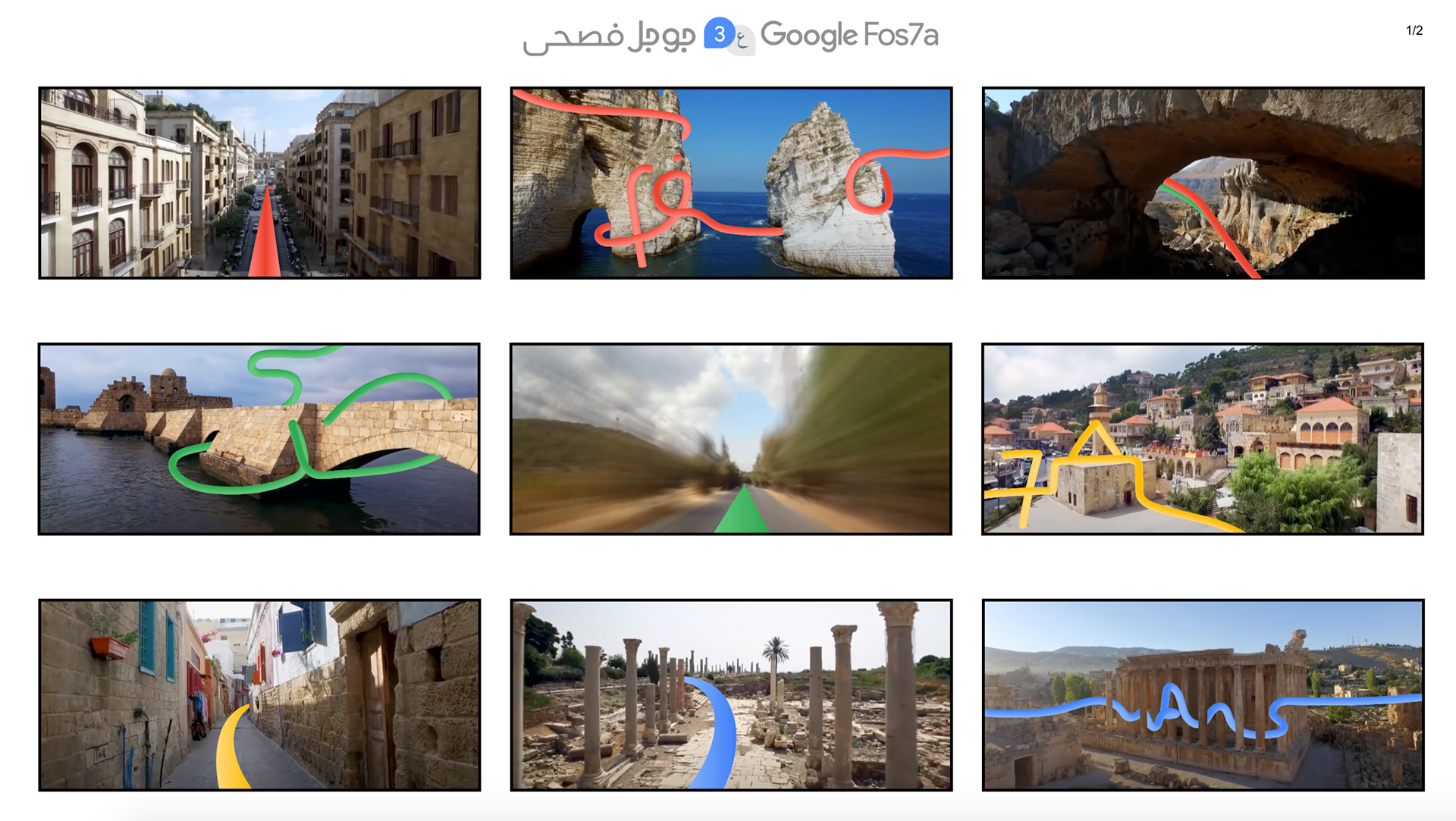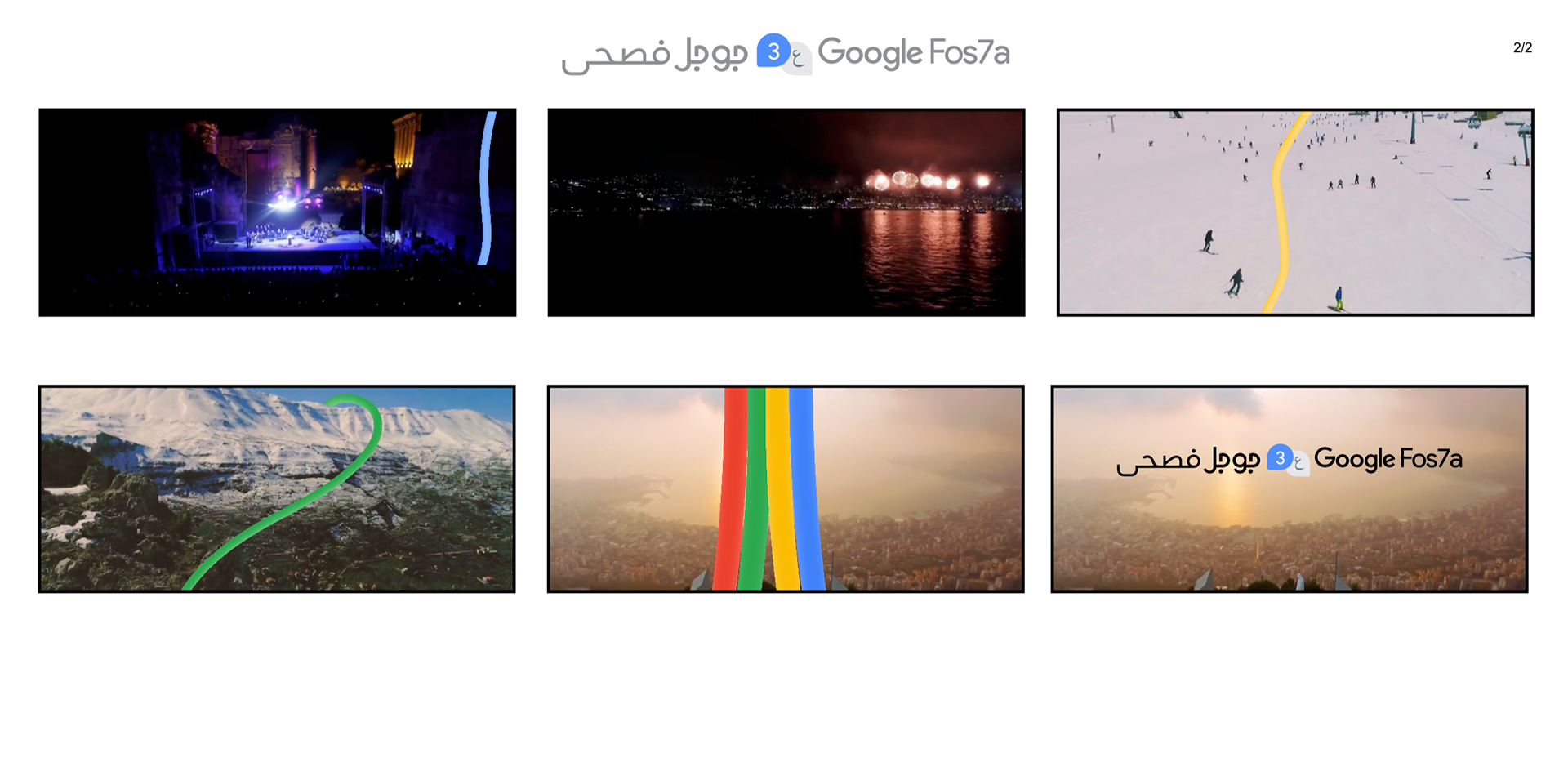This service is mainly based on Google Translate. For my compositions, I took what was already there and made it more inclusive and user friendly.
The logo is similar to the Google Translate one but I included speech bubbles as a symbol for the Spoken Arabic. I chose these two letters because it represents the way we write Arabic using Latin character today. This Arabic letter don’t have a phonetic equivalent in Latin so we usually write it using the number 3.


The webpage is the same as the Google Translate webpage but I made it in both Spoken Arabic and MSA.
For the App, I wanted it to offer more features than the webpage. The new features it provides are the various languages options. Here in Lebanon, Arabic is the national language but schools are either in French or English so it is very common for us to speak the three languages. So, I made sure that the app could be used in all of these languages.
I also added two new features that are inspired by the Google Translate App. The first one is the handwriting option. The main reason why we started writing Arabic digitally using Latin characters, is that we’re not used to the Arabic keyboard. It would take us a lot of time to write a sentence in Arabic and what we would usually do is translate our text from French or English and then copy and paste it. With this new feature, you could automatically handwrite the Arabic letters which would save you a lot of time.
And the other option is the mic option for the Spoken Arabic. From its name, you can understand that it is easier for us to speak it rather than writing it down so the microphone option would let you say your text out loud and translate it for you.
Here is a video I made explaining some of the issues I found with the Google Translate App. This analysis helped me design a better version of it for my application.
For the advertisement, this was the storyboard for my initial concept. I was going to represent lines that go through various landscapes in Lebanon while writing out Arabic and Latin letters.


But the concept wasn’t really working and I wanted the video to be more straightforward. I wanted to show the different features the app provides through a motion design piece.
These two videos that Google made to advertise the Google Pixel 4a were my main inspirations;
The videos are very lively and present you all the information you need in a small amount of time. They transition between the different scenes by animating shapes and I found it to be the most appealing part of the videos. So, I mainly focused on that.
The soundtrack is also a very important part of the video because the animations are based on the music. So, I looked for a soundtrack that has a similar vibe to the ones they used but is related to Lebanon. I didn’t want to use the traditional folklore songs but ones that speak more to my generation. There is a band called Mashrou’ Leila who embody the modern Lebanese culture by producing modern music with oriental sounds. This is the song I chose;
For the urban advertisements, I wanted to present the app in the different situations it can be used in. I chose a different sentence for each poster that presents a new case.
The first advertisement’s sentence is “hi kifak cava?” which is considered the typical Spoken Arabic sentence. I felt that it represented the essence of the app perfectly and it would be the most appealing to Lebanese people.
The second advertisement presents the situation in which someone might receive a formal email and may need to translate it from MSA to Spoken Arabic. The sentence I wrote is “Hello Sir, the documents you may need for the meeting are your ID and your registration number.”
The sentence in the third advertisement is a famous Lebanese proverb. Proverbs and sayings are the only sentences we speak in MSA since we usually use Spoken Arabic. This situation presents the translation of one of those proverbs into Spoken Arabic to understand them better.
And finally, the last advertisement presents the situation in which a kid may need to translate a sentence into MSA for their homework. MSA is only used for written content at school and it’s sometimes hard for us to find the right words to use. The sentence I wrote is; “my essay talks about my day at the beach”.
